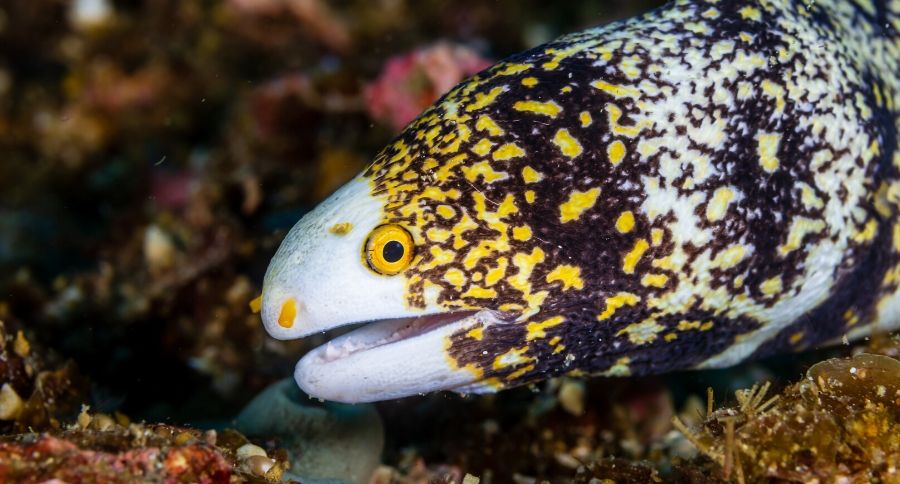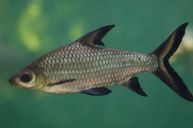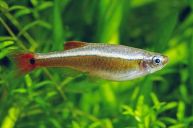Snowflake eel or snowflake moray eels are thought to be the most congenial of eels if you must get one for your tank. That said, these eels can get large, up to 2 feet long in captivity, and are very good at escaping from the tank. Yikes!
Just look at the pictures we've included! They're kind of scary looking.
A large tank (50+ gallons) with a tight-fitting top is a necessity and here's why!
Breed overview for the snowflake moray eel
They can live up to 4 years. So you need to commit once you find an eel for your tank. They grow pretty fast so you'll need a large tank even if they have to grow into it. They can grow up to 24 inches.
They're categorized as 'aggressive' or semi-aggressive on the social scale and they're carnivores!
Here are four reasons you'll want one for your tank according to Salt Water Smarts.
- Are they kind of cute? Yes! With white, yellow, and brown blotched markings on its body, vaguely reminiscent of snowflakes, and an almost cute face with gold-rimmed eyes.
- This species reaches only 3 feet, and most specimens remain considerably smaller. (We still think this is really long and some other types of eels can grow to 10 feet).
- They're fish-friendly but you don't want fish small enough that can be swallowed.
- Are they easy to feed? Yes!
"Though the occasional specimen may require live foods, such as glass shrimp, to initiate a feeding response, most snowflake morays will readily adapt to non-living fare. Offer a variety of fresh or frozen (and occasionally vitamin-enriched) meaty items of marine origin, such as shrimp, squid, clams, mussels, and fish flesh, ideally presented with tongs or a feeding stick (never with your hands). Snowflake morays should be fed only two or three times per week."
Care and habitat
The minimum tank size is at least a 50-gallon tank. Yet these eels are known to be escape artists and the top of your tank must be tight. It could wind up on the floor.
Another habitat must is a good amount of live rock for the eel to hide in but be sure any stacked rock is carefully secured so the eel can't topple it with its wriggling and it needs these hiding places.
We cannot stress this enough so let's talk about what to feed your eel, again. Keep them well-fed with meaty foods! Feed them shrimp, squid, clams, mussels, and fish flesh with tongs (never with your hands). Snowflake morays should be fed only two or three times per week. Don't hand feed them! You'll get a painful bite. Also, don't let his tankmates become food! (We weigh in on this below).
Some categorize their care as easy to intermediate so the care level is manageable for a hobbyist.
If you're doing research you should know their scientific name and common name.
Common names: Snowflake moray, Bosch's eel, clouded moray eel, floral eel, starry eel, white and zebra moray eel
Scientific names: Echidna nebulosa
Where are they from? The snowflake eel inhabits crevices throughout the Indo-Pacific reefs from Hawaii southward to Australia, westward through the islands of the Indo-Pacific to the East Indies, and across the Indian Ocean to the coast of Africa.
Tankmates
I'm actually really stunned they can live with any fish!
Compatible tankmates for the snowflake moray eel include other relatively large, aggressive fish, such as lionfish, tangs, triggerfish, wrasses, and possibly even other snowflake moray eels if they are both introduced to the tank at the same time. Can you imagine having two? The Spruce Pets explains that they're really not as aggressive as other saltwater morays.
"Although considered to be less aggressive than other saltwater morays, the snowflake eel can become very pugnacious at feeding time. With poor eyesight but a keen sense of smell, when food is detected it emerges from hiding and aggressively searches it out."
Please leave us a comment below and let us know what you think of your fish tank?
WATCH NOW: Betta Fish Are Super Colorful!




